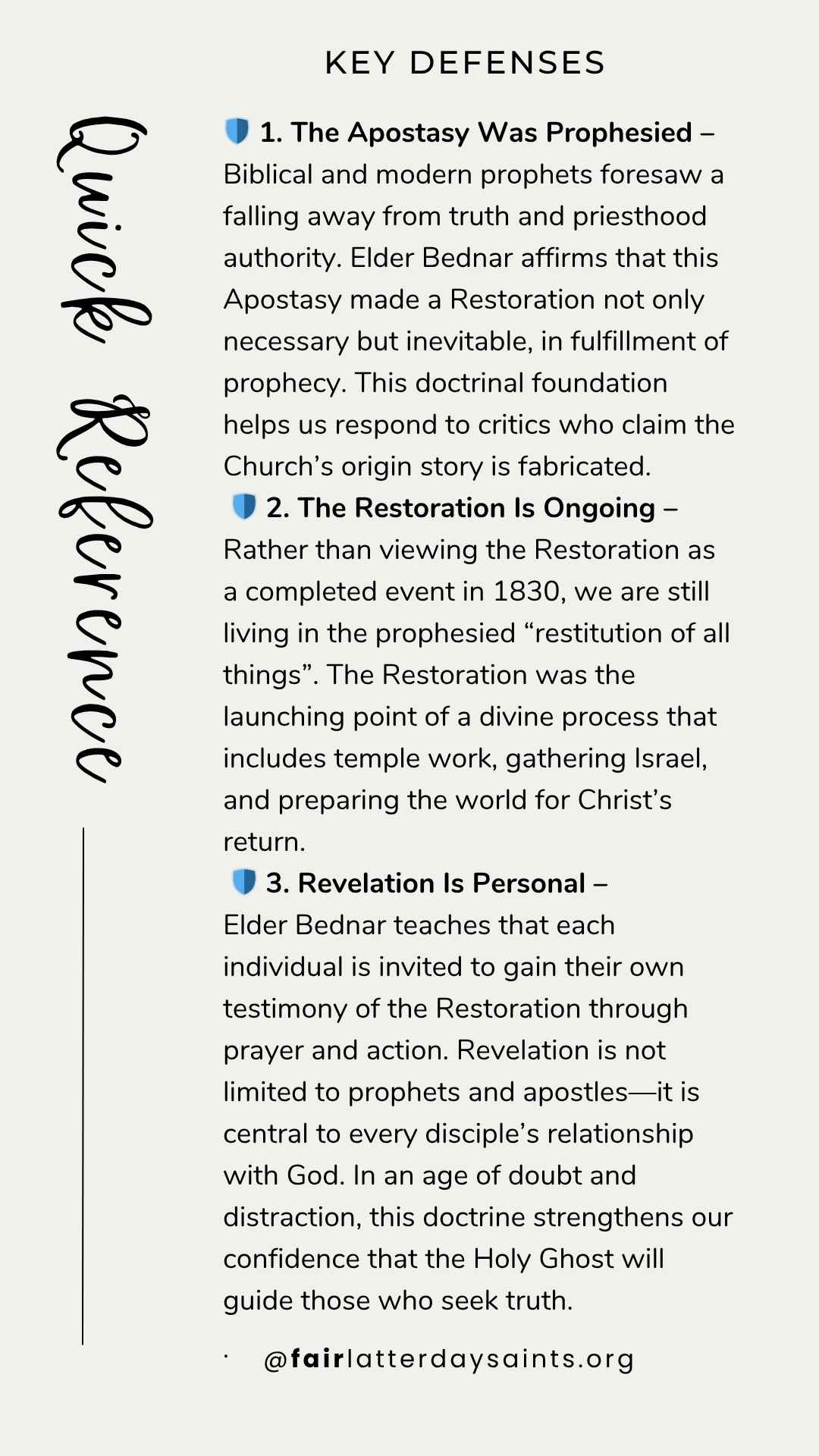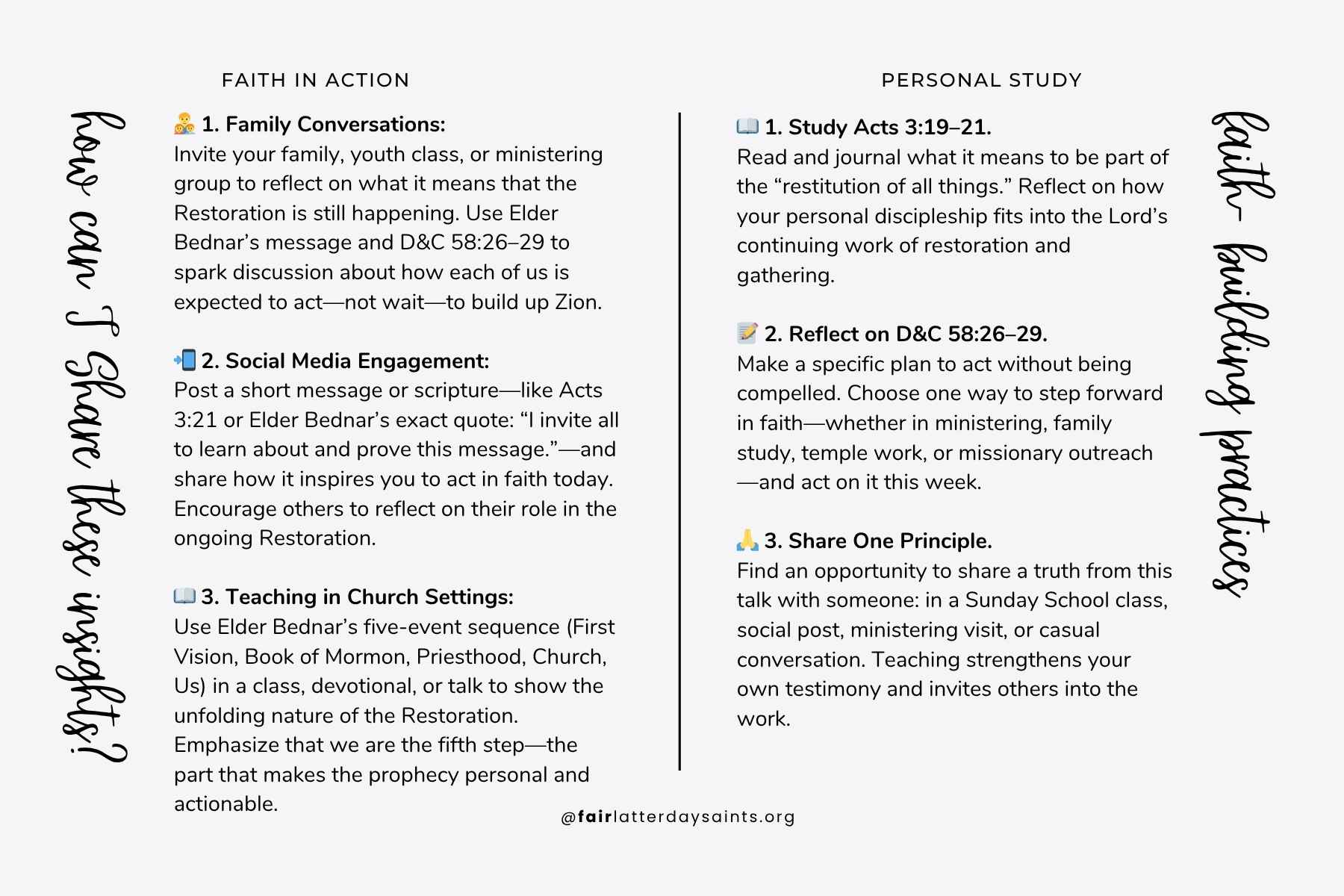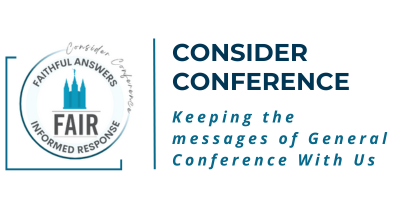
From Passive Observers to Active Participants in God’s Prophetic Work
Have you ever assumed that the Restoration was something that happened once—and now we’re just meant to follow along?
In his deeply doctrinal message, “The Times of Restitution of All Things,” Elder David A. Bednar challenges that assumption. Quoting Acts 3:21, he draws our attention not just to what God has restored, but what He continues to restitute—through us. The Church of Jesus Christ of Latter-day Saints was formally organized in 1830, yes—but that event was part of a prophesied restitution of all things foretold by prophets throughout time. And we are not merely witnesses to it—we are meant to be agents in it.
Elder Bednar’s invitation is clear: learn the message, prove it for yourself, and act on it. The Restoration isn’t only about what God did through Joseph Smith—it’s about what He is now doing through each of us. So the question is: Are we content to be acted upon? Or will we choose to act in faith as disciples in the final dispensation?
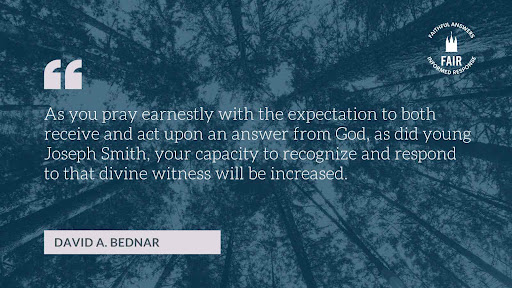
Apologetic Issues: Restoration and Apostasy
Misconception: Many members believe the Restoration was a one-time historical event completed through Joseph Smith. Others concede the idea of an “ongoing restoration” but assume that only Church leaders receive revelation and direction, leaving ordinary members to simply follow.
Response: Elder Bednar reframes this entirely: the Restoration was only the beginning of the “restitution of all things” (Acts 3:21). This restitution includes not only restored priesthood, ordinances, and doctrine—but also our individual participation in fulfilling prophecy. Elder Bednar teaches that each of us is to “learn about and prove this message,” actively preparing the world for the Second Coming.
Common Fallacy: False Dichotomy – Presenting only two options when more exist.
Correction: Elder Bednar adds a third, crucial truth: The Restoration inaugurated a restitution that requires each of us to engage—studying, praying, acting, and helping to fulfill God’s promises.
Criticism: Critics often argue that there was no “Great Apostasy,” and that the early Christian Church has continued uninterrupted through history. In their eyes, the Apostasy is an LDS invention justifying the need for a new Church.
Response: Elder Bednar (quoting the Restoration Proclamation) affirms that after the death of Christ’s original Apostles, “Christ’s New Testament Church was lost from the earth.” The Restoration was not about dismissing past faith, but about restoring priesthood authority, covenants, and organization through a divinely appointed prophet. This directly fulfills the biblical promise of a future restitution.
Common Fallacy: Straw Man – Misrepresenting a position to make it easier to attack.
Correction: The Church does not claim that all truth disappeared—only that authority and fullness had to be restored by divine means.
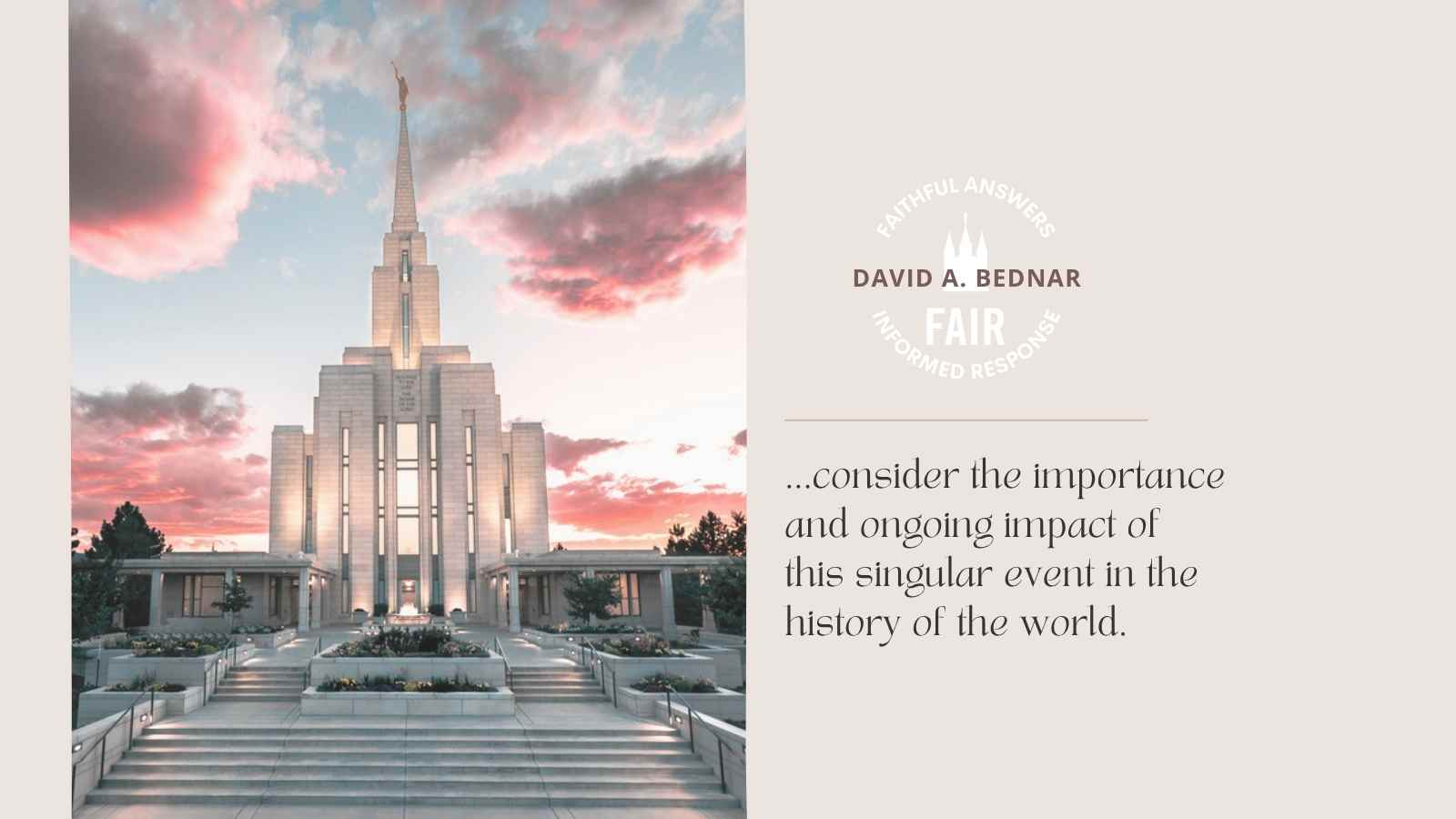
Apologetic Application: The Apostasy, Restoration and Restitution
Core Doctrine: The Great Apostasy refers to the loss of priesthood authority and gospel fullness. What began with Joseph Smith is part of a broader restitution (Acts 3:21)—one that invites us to actively participate in preparing the world for Christ’s return.
This doctrine helps clarify why the Restoration was not just about correcting teachings or starting a new church—it was about divinely reestablishing Christ’s original authority, ordinances, and covenants. It affirms that the Church today stands not only as a restored institution but as the prophesied means of gathering Israel, sealing families, and preparing for the Second Coming. Recognizing that we live in the era of restitution reframes our role as disciples—not as observers of sacred history, but as active partners in the fulfillment of God’s work on earth.
1⃣ The Apostasy and Restoration were prophesied.
The Apostasy was prophesied (2 Thessalonians 2:3; Amos 8:11–12), and the Restoration was needed to return authority and ordinances to the earth. Prophets and apostles foresaw a falling away from truth and priesthood power, which made a divine intervention necessary. The Restoration through Joseph Smith wasn’t just a revival—it was a re-establishment of the Church with the same authority and covenants Christ originally gave.
2⃣ Restitution is participatory.
It includes each of us gaining a testimony and acting in faith to help fulfill God’s promises. Rather than being spectators to prophecy, we are agents commissioned to act. Through missionary work, temple service, personal revelation, and teaching others, we take part in the fulfillment of Acts 3:21 as co-laborers in the Lord’s ongoing work.
Practical Apologetic Use: Rather than viewing the Restoration as a completed chapter in Church history, Elder Bednar urges us to see it as the opening act in an ongoing divine process. The year 1830 marked the official organization of the Church, but it was just the beginning of a sweeping restitution that continues to unfold. Understanding this helps us reframe our role—not as bystanders in a finished work, but as engaged participants in the prophesied gathering, teaching, and temple work that defines this dispensation.
Historical and Doctrinal Connections
In Acts 3:21, Peter foretells a future time when God would orchestrate the “restitution of all things.” Elder Bednar links this to modern revelation:
The Savior’s restored Church is being established throughout the world and is the instrument by which God will ‘gather together in one all things in Christ.’
Come, Follow Me Connection:
This week’s study includes Doctrine and Covenants 58:26–29, a passage that beautifully complements Elder Bednar’s message. The Lord teaches that He does not intend to “command in all things”—instead, He calls us as disciples to be “anxiously engaged in a good cause” and to act “of their own free will.” Elder Bednar’s invitation to “learn about and prove this message” reflects that same divine expectation. We were never intended to experience the Restoration as a passive spectator; each of us is meant to be an active participant through initiative, faith, and agency.
Living Apologetics: How to Apply This Today
 We are not passive recipients of restored truth—we are participants in the restitution of all things.
We are not passive recipients of restored truth—we are participants in the restitution of all things.
Principle in Practice: We need to be engaged in the restitution of all things
1⃣ Explain That Priesthood Authority Had to Be Restored:
Many Christians believe that the Church merely needed reformation, not restoration. But Elder Bednar testifies that priesthood authority and saving ordinances were lost and had to be restored by heavenly messengers—not simply rediscovered through scholarship. When someone questions why a Restoration was necessary, explain that authority from God can’t be self-appointed or inherited through tradition; it had to be divinely conferred once again.
2⃣ Emphasize Personal Revelation as a Covenant Expectation:
While we often associate revelation with prophets, Elder Bednar reminds us that each disciple is invited to receive answers and direction from God. Revelation isn’t reserved for leadership—it’s foundational to our covenant relationship with Him. You might say: “One of the greatest truths of the Restoration is that each of us can ask, seek, and receive.”
Top Apologetic Facts
 1. The Church Was Organized After Key Restorations – The formal organization of the Church on April 6, 1830, occurred after priesthood authority had been restored by John the Baptist and the Apostles, and the Book of Mormon had been translated and published. This sequence emphasizes that the Church is built upon divinely conferred authority—not human ambition or historical tradition.
1. The Church Was Organized After Key Restorations – The formal organization of the Church on April 6, 1830, occurred after priesthood authority had been restored by John the Baptist and the Apostles, and the Book of Mormon had been translated and published. This sequence emphasizes that the Church is built upon divinely conferred authority—not human ambition or historical tradition.
 2. Restitution Means Ongoing Fulfillment – Restitution, as used in Acts 3:21 and by Elder Bednar, means more than restoring what was lost—it means bringing to pass everything prophesied, promised, and covenanted in all previous dispensations. It includes temple covenants, family sealing, gathering Israel, and preparing for the Second Coming.
2. Restitution Means Ongoing Fulfillment – Restitution, as used in Acts 3:21 and by Elder Bednar, means more than restoring what was lost—it means bringing to pass everything prophesied, promised, and covenanted in all previous dispensations. It includes temple covenants, family sealing, gathering Israel, and preparing for the Second Coming.
 3. Testimony Is Gained Through Action – Elder Bednar promises that those who “learn about and prove this message” will be blessed with their own divine witness. This underscores that faith is not passive; it is a process of seeking, acting, and receiving. Living the gospel is how we come to know it is true.
3. Testimony Is Gained Through Action – Elder Bednar promises that those who “learn about and prove this message” will be blessed with their own divine witness. This underscores that faith is not passive; it is a process of seeking, acting, and receiving. Living the gospel is how we come to know it is true.
Conclusion
The Restoration of the gospel was not the end of a story—it was the beginning of a divine unfolding. Elder David A. Bednar reminds us that we are not merely inheritors of restored truth, but agents in a continuing restitution—a prophetic work that gathers, heals, and prepares the world for the Second Coming of Jesus Christ.
We are invited to learn, to prove, and to act. The Lord trusts us to move forward without needing to be “compelled in all things” (D&C 58:26), and He has placed power within us to participate in fulfilling prophecy, not just observe it.
So let’s ask ourselves: Am I waiting to be acted upon—or am I fully engaged in the restitution of all things?
The Savior’s restored Church is being established throughout the world and is the instrument by which God will ‘gather together in one all things in Christ.’
The Consider Conference series by FAIR offers an in-depth look at recent General Conference talks to help members of the Church of Jesus Christ of Latter-day Saints navigate common questions, misunderstandings, and criticisms. Each post provides doctrinal insights, historical context, and practical ways to apply gospel principles in everyday conversations. Through this series, we hope to equip readers with faith-promoting resources that encourage thoughtful reflection, respectful dialogue, and a stronger foundation in gospel truths, fostering both personal conviction and meaningful discussions with others.
The post The Times of Restitution Are Now appeared first on FAIR.
Continue reading at the original source →




